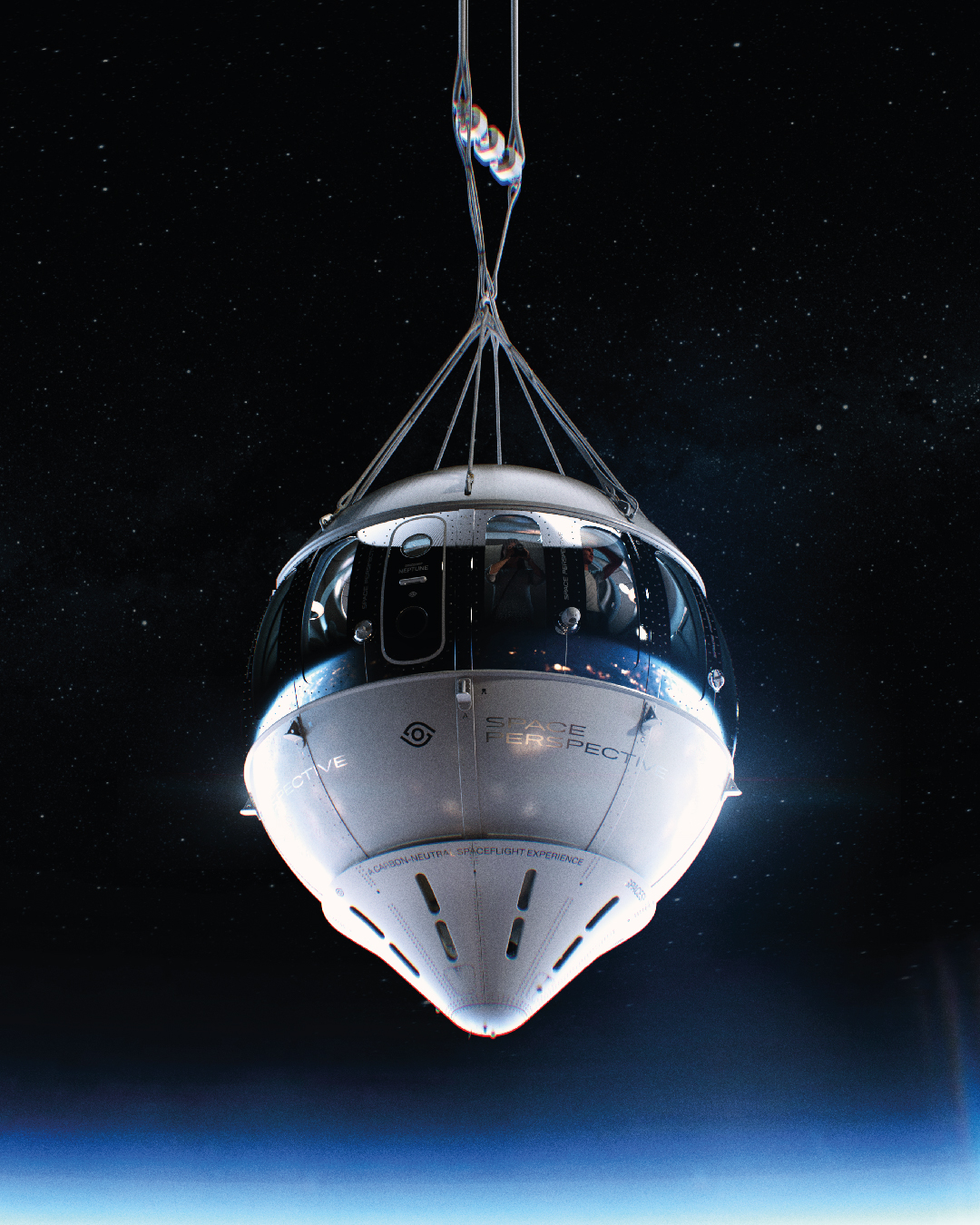
You may think of the Wright brothers’ first flight in 1903 as the moment when humans broke free of the bounds of Earth’s gravity. In fact, it was two Frenchmen, Jean-Francois Pilatre de Rozier and Francois Laurent, who successfully conducted the first manned flight in a hot air balloon back in 1783. Almost two and a half centuries later, balloons will carry space tourists into the high stratosphere as aerospace companies like Spain’s Halo Space, France’s Zephalto and Florida’s Space Perspective work towards earning commercial licenses that could come as early as 2025.
“It is a completely different space-going experience,” Space Perspective Co-founder Jane Poynter told Jetset. Attached to advanced stratospheric “space” balloons, specially designed luxury capsules, like Space Perspective’s Neptune, will travel at around 12 miles per-hour on a six-hour journey from the surface of the planet 100,000 feet into the stratosphere before descending back to Earth. Poynter said the gradual ascent will allow people’s minds to adjust to the scale change of geography like the Florida peninsula as the famous landmass slowly shrinks. Such conditions lead to the “overview effect,” which NASA describes as a powerful shift in the way space travelers think about Earth and their place in the cosmos.
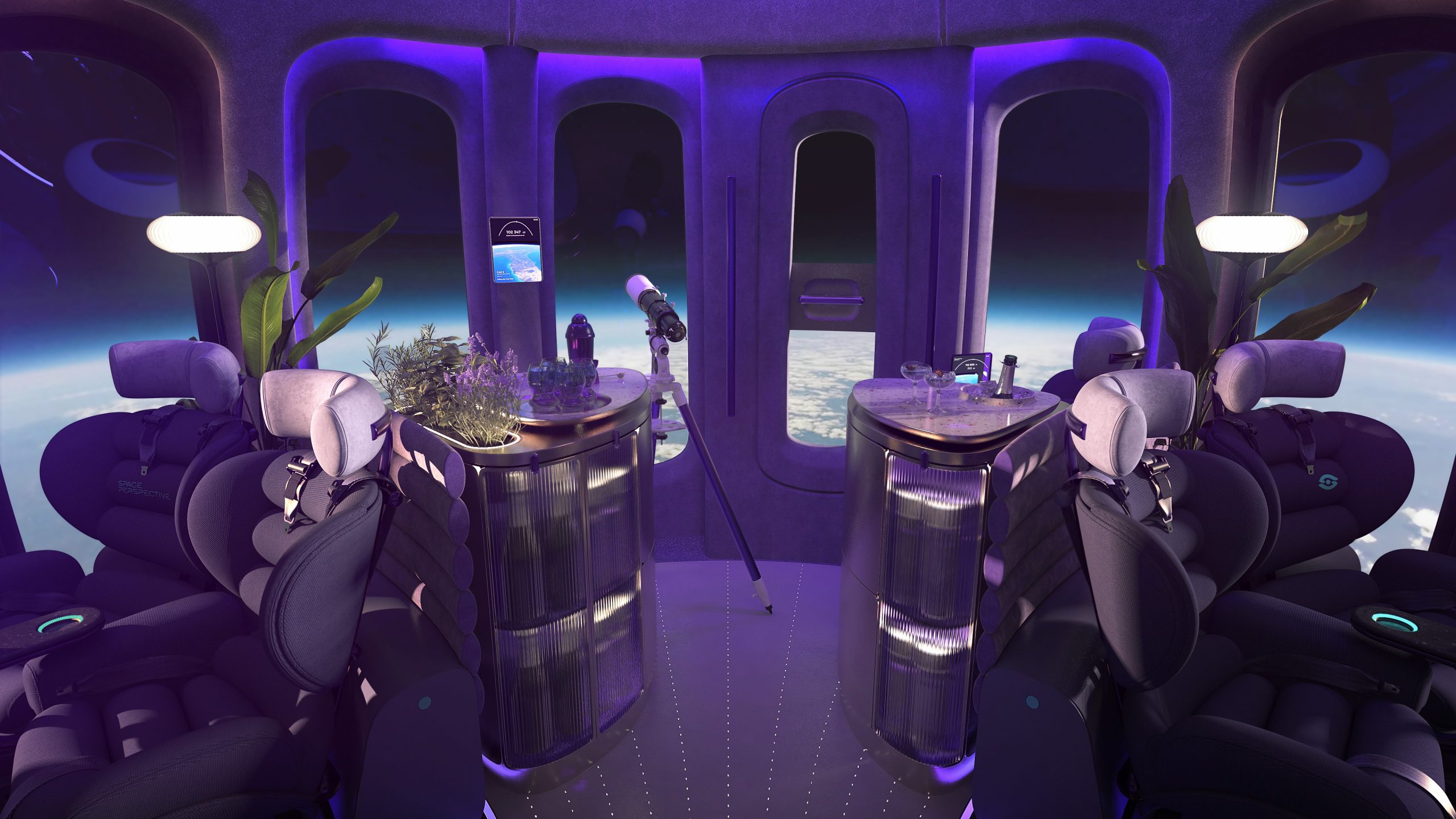
People inside Space Perspective’s Neptune spaceship will experience the same gravity as on Earth, as well as little to no turbulence, Poynter said. During the journey’s apex, passengers will be able to see the Earth’s blue curvature through 360-degree panoramic windows. The capsule also comes equipped with the amenities you would expect from a private jet, including Wi-Fi connectivity (for those selfies in space), a stocked bar and the finest gourmet cuisine served during the flight. A trip aboard space balloon Neptune can also be customized for those who want to buy out an entire flight for their family and friends. According to Poynter, clients have expressed interest in releasing albums from space, hosting weddings and even bringing their pianos onboard. “Some of our customers want to really dig in,” she said.
Compared to propulsion-based spacecraft developed by SpaceX, Blue Origin and Virgin Atlantic, space balloons will not require intensive physical preparation before flying. People healthy enough to board a commercial jet will be able to fly aboard a space balloon, Poynter explained. Space Perspective is aiming to start commercial flights by 2025, according to Poytner, who said she expects the $125,000 ticket prices to rise, given the overwhelming demand to travel to space. Half the tickets sold, she said, are buyouts of the entire trip.
Halo Space and Zephalto’s spacecraft follow a similar flight pattern. It will take around four hours to reach the highest level of the journey, the apogee, where passengers will escape approximately 99 percent of the Earth’s atmosphere. Although technically still in the stratosphere, the altitude will make it seem as though they are floating above the Earth, according to Halo Space’s website, promising an accessible, cheaper way to experience views a relative few have ever witnessed. Like Space Perspective’s Neptune, these other capsules are also designed to enhance the view from the high stratosphere and promote a comfortable, social atmosphere.
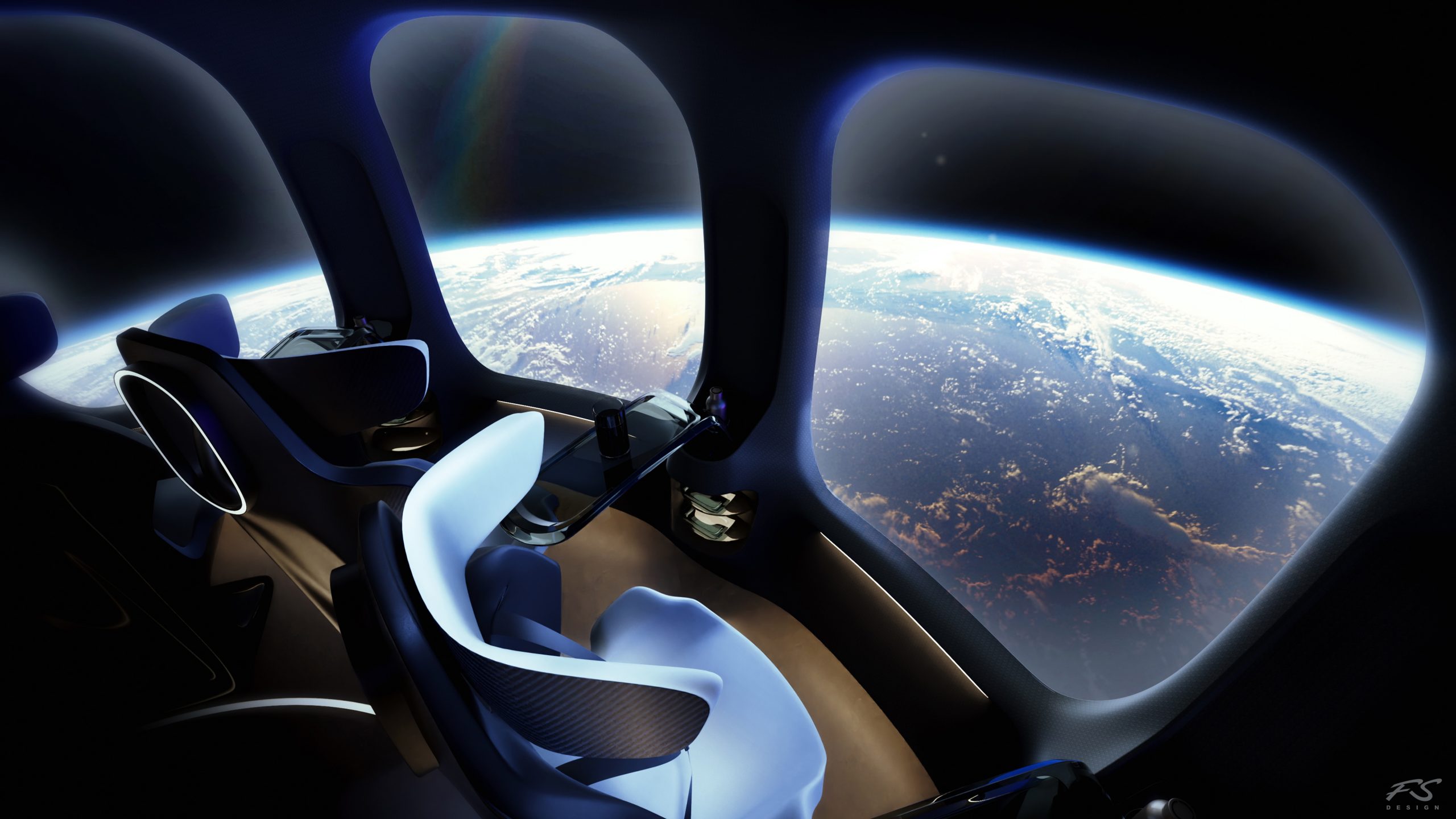
Halo Space has teamed up with automotive designer Frank Stephenson, the designer behind the Ferrari FXX and McLaren P1 supercars, for the interior of its capsule, Aurora. The overall design is meant to blend the aesthetics of a space shuttle with the comforts of a modern lounge. Sweeping panoramic windows offer an intimate connection to the view outside, “further amplifying the feeling of peace as passengers gaze upon Earth,” CEO of Halo Space, Carlos Mira, told Jetset. The Aurora can carry eight passengers and one pilot inside the luxurious, 30-square foot cabin
The company promises an immersive experience even beyond the trip to the stratosphere, with the desert sands of Saudi Arabia acting as launch site and stunning backdrop. The desert offers a stark contrast to the encroaching darkness passengers will experience at the edge of space. Halo Space also plans to operate out of Spain, Australia and the United States, with the company planning to begin its commercial operations in 2026. Initial prices are expected to be around $160,000.
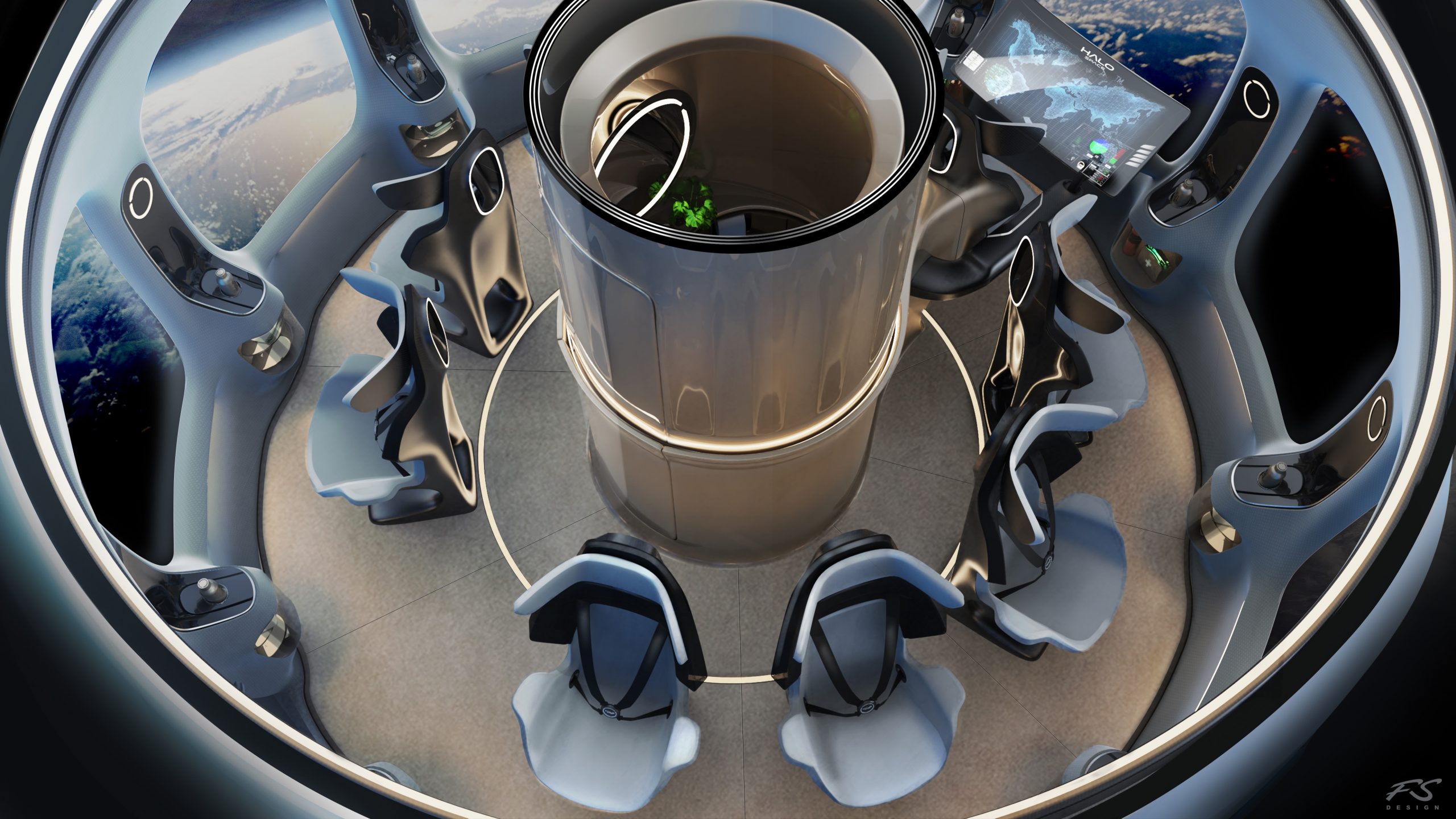
Inspired by “art de vivre,” or “the knowledge of how to enjoy life,” Zephalto’s Céleste capsule’s minimalist approach is born out of a partnership between Zephalto and interior designer Joseph Dirand for both the interior and exterior of the capsule. Vincent Farret D’Asties, founder of Zephalto, told Jetset the design “emphasizes formal simplicity, with clean lines, practical spatial arrangements and adaptable seating, creating a cocoon-like environment.” Inside, the textures and fabrics are meant to “envelop guests in comfort and tranquility” within a neutral color palette of creams and beiges.
The view from Céleste is the focal point of the experience, according to Farret D’Asties.
The capsule’s interior is designed for a contemplative experience—promoting total immersion in observing the Earth 15.5 miles into the stratosphere. Flights will start at roughly €170,000 euros or a little under $190,000. The company plans to begin commercial flights in 2025, with all flights already fully booked. Zephalto initially plans six flights a year.
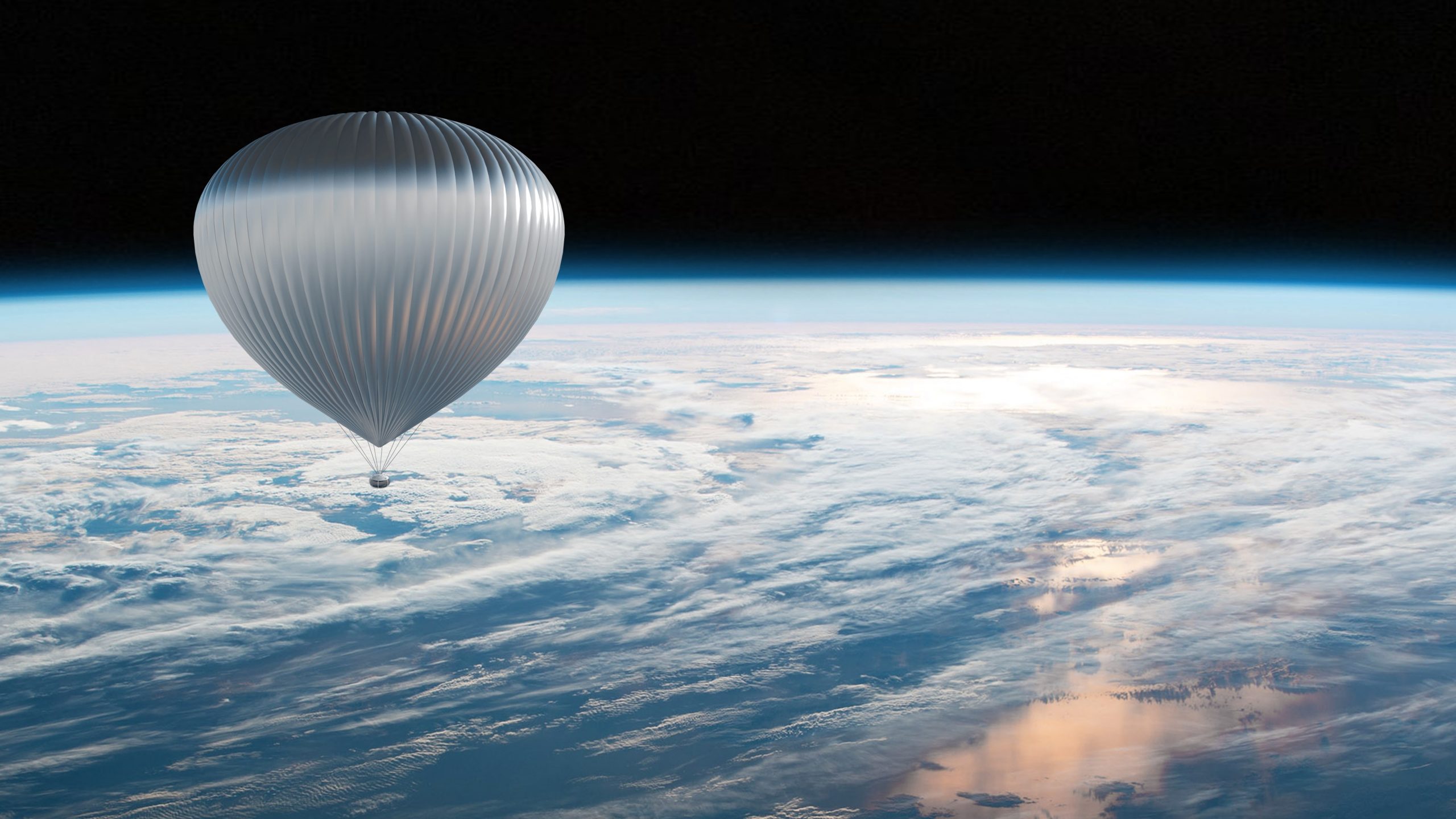
Safety and Testing
Of course, any passengers hoping to fulfill their dream of reaching space want to ensure that the trip is safe. As recently as September 2024, Space Perspective broke into the news when it successfully completed its first unmanned test flight. Poynter said the data from these test flights will be studied and shared with the FAA to ensure the spacecraft is safe and ready to fly. Space Perspective looks to earn certification from the FAA so it may operate as a commercial space company.
Zephalto and Halo Space are also conducting test flights as they prepare to test their own capsules and earn certification to operate commercially. These companies will have pilots onboard with the overall flight automated and closely monitored from Earth. The capsules have parachutes built into the capsule in the event that the stratosphere balloons fail.
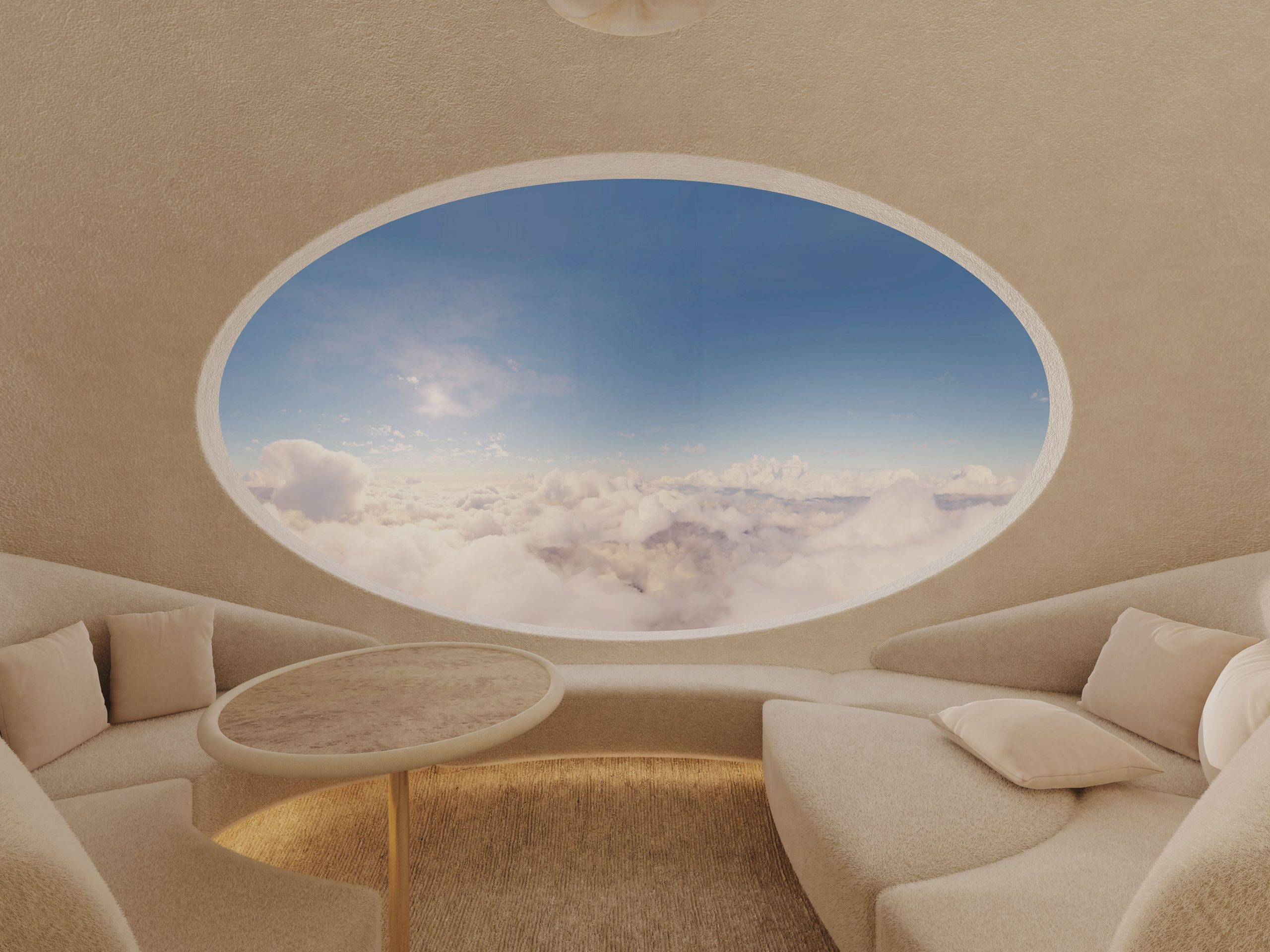
Zepahtlo said that its tests have been successful as they develop higher flights with larger sized balloons, with the goal of conducting manned tests in the near future. Halo Space, with a projected 2026 launch date, said the company is fully committed to the highest standards in aerospace safety as they test the capsule and balloon systems.
In her conversation with Jetset, Poynter highlighted the proven track record of space ballooning, noting that since NASA and the European Space Agency began using balloons to conduct research, none has ever experienced inflight failure. Neptune’s capsule will be equipped with four parachutes to ensure a safe return to Earth, making for a safe way of going to space.
“Every astronaut I have spoken to that has flown to this altitude has described the experience with enormous reverence,” Poynter said. “They often talk about seeing the curvature of our planet, that thin blue line of atmosphere set against the stark blackness of space as a transformative experience.”

